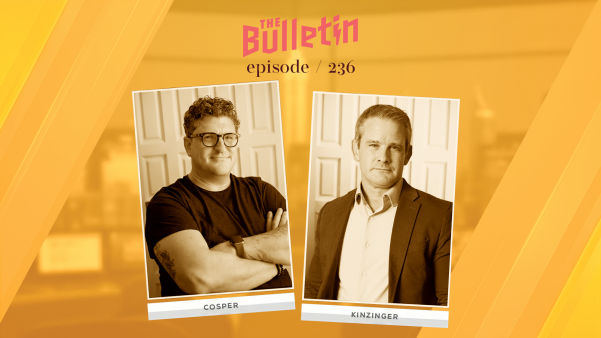One morning this past January, I received a distressed call from a woman in our congregation.
She and her husband had been longtime members, seemingly happily married for more than 40 years. Her husband was a successful businessman, and she was a joyful, capable leader who oversaw many different initiatives in our church. They were both delightful people, and so many things about their life seemed idyllic.
But that morning, she was in great distress—she had received an ominous text from her husband that suggested he was about to take his own life.
We panicked, made some calls, and did everything we could to find him. But it was too late. After kissing his wife goodbye that morning and telling her he would see her after she got home from Bible study, he had driven out to a lonely place by the river and taken his life.
Their family was shattered. Our community was shattered. He had no known history of depression or mental illness, and he had not mentioned anything to anyone about a personal struggle. To this day, we do not know why he made this terrible choice.
But he isn’t the only one. In nearly twenty years of pastoral ministry, I have buried three men who died by suicide—and all three of these were in the last 24 months.
You could call this coincidence, but the data suggests otherwise. The Centers for Disease and Control and Prevention reports that suicide rates increased approximately 36 percent between 2000 and 2021 in the United States. Suicide was responsible for about 49,500 deaths last year—the highest number ever recorded.
In fact, suicide was the second-leading cause of death for people ages 25–44 last year. The number of people who think about or attempt suicide is even higher. In 2021, an estimated 12.3 million American adults seriously thought about suicide, 3.5 million planned a suicide attempt, and 1.7 million attempted it. The rate of suicide is highest among middle-aged white men.
Clearly, something about our current cultural moment is making suicide much more prevalent. While I don’t understand all the reasons for it, I do know that in the last few years, I have personally seen more mental health concerns than ever among people in our congregation.
Anxiety, depression, and addiction. Marriages strained and falling apart. Family estrangement and conflict in relationships. And of course, incidents of suicidal ideation, and the act of suicide itself. In conferring with other pastors, I’ve learned my congregation is no anomaly, but simply reflects larger trends across the North American church landscape.
All this has led me to ponder my role as a pastor and the responsibility of the local church in helping address mental health struggles in our congregations. But this is not just a matter of professional interest for me—it is also personal.
Since my early teens, depression and anxiety have been near-constant companions in my life. In my worst moments, thoughts of suicide were oppressive and inescapable. My grandmother died by suicide, so I recognized that part of her own inner darkness was likely in me. Yet in my spiritual worldview, I believed that if I trusted God and his promises deeply enough, I could be happy and whole—and to admit to anyone in my Christian community that I was battling with such dark thoughts seemed out of the question.
This approach got me through high school, college, and early young adulthood, albeit with some dark valleys along the way. But in 2010, as an inexperienced church planter with several young kids and a busy family life, I hit a valley so deep I could not crawl out.
Out of desperation and the prodding of my very resilient wife, I began to see a therapist who helped me untangle the threads of my snarled mind. I learned that my brain, just like my body, needed support and caring intervention. I was referred to a psychiatrist, who diagnosed me with clinical depression and prescribed an SSRI to help regulate my heaviest emotions by increasing levels of serotonin in the brain.
Initially, this felt like a defeat—I felt ashamed that my faith and spiritual habits were not strong enough to grant me the hopeful attitude befitting of a believer. I found a therapist in another city to avoid running into someone I knew. I hid my meds in a bathroom drawer so no one would see them when they visited. I was a pastor, after all—the most ostensibly “spiritually mature” among us—so I could not afford to let others think their spiritual leader needed help beyond the simple gospel.
Yet I slowly grew weary of pretending. This was partly because my own thinking about the gospel and mental health had begun to change. But I also increasingly began to witness the damage caused by a church culture that does not acknowledge mental health struggles as a common battle for many Christians. I saw the harm caused by an unwillingness to face these challenges with the full arsenal of God’s healing potential through the body of Christ.
While there has been a massive shift in the last decade away from the stigmatization of mental illness, many evangelical Christians today still think mental health directly reflects the strength of personal faith. The logic follows that if you’re anxious, depressed, or suicidal, you must not be trusting God enough—and if you seek psychotherapy or medical treatment, you must not be fully relying on God for healing.
When environments create shame for believers who struggle in these ways, it can lead to needless suffering and, in the worst cases, death. So how can we cultivate congregations in which it is not only safe but helpful to talk about our mental health challenges—even the most terrible kinds? Is there a way the local congregation could become not just a supportive community when it comes to mental health struggles, but a preventative community?
First, we need a better theology of personhood. Within American evangelicalism, there is still a perceived conflict between science and spirituality, between the body and the spirit. This faulty approach is called “dualism,” and it has, in the minds of many Christians, severed the vital connection between our spiritual health and our physical, bodily existence.
But the Christian vision of the human being defies material and spiritual dualism. In the biblical story, a person is neither a product of materialist evolutionary forces nor a soul that happens to have a bodily container. Instead, as humans made in the very image of God, we are made to be whole.
Like a beautiful tapestry, our body, mind, and spirit are woven together in a fully integrated personhood. And as such, our care of humans must involve the whole person—attending not just to the spiritual dimensions of a person’s life, but the way our bodies and brains often carry on dark legacies of the sin and trauma from our personal and family histories.
There is hardly a better story to illustrate this than in Luke 8, where Jesus encounters the unhoused, demon-possessed man who calls himself “Legion.”
Evil had decimated the tapestry of this man’s life. He was naked, living in isolation, alienated from family and community, unable to work or meaningfully contribute to society, physically disfigured, and trapped in self-harming behaviors. He was a disintegrated human being, whose personhood had become unraveled physically, spiritually, mentally, psychologically, and socially. The beautiful tapestry of wholeness that was meant to be his life seemed to be nothing more than a pile of tangled threads.
But after his encounter with Jesus, the man is completely changed. Jesus produces a total transformation, weaving the threads of the man’s life back together. Yes, it was a spiritual transformation—but it was so much more. Jesus clothed him, put him in his right mind, and sent him back into his community. Jesus restored this man in every way: physically, psychologically, and socially. Jesus gave this once-broken man his entire life back. Jesus made him whole again.
So, a Christian vision of supporting people in their mental health mirrors this vision of what it means to be human. We serve people toward wholeness—helping them integrate their body, mind, and spirit—by using all the tools God has supplied in his created order.
Yet we need so much more than good theology. For the work of healing to occur, we need relationships of trust and vulnerability. The work of human flourishing must be carried out in a context of community—where people are safely able to name their places of deepest disintegration. If a suffering person can be likened to a struggling plant, the church can provide “good soil” for them to flourish.
But for that to happen, the church can’t just be a Sunday event with good preaching, worship, and programming. It must strive to become a vulnerable community—one in which, to use the words of Dietrich Bonhoeffer, people are not “hypothetical sinners,” but actual strugglers who can name their stumbling journeys out loud to one another.
For the person battling with deep depression, anxiety, or suicidal thoughts, having a community in which mental health struggles are openly named and discussed can be lifesaving. In the last six months, our own church has sought to facilitate these conversations by hosting classes and forums where both practitioners and everyday strugglers can share our stories.
As I and others in our congregation have risked being more open about our interior battles, it has granted people permission to begin naming similar struggles in their own lives. Our vulnerability invites those around us to come out of hiding—to slowly edge their way out of the darkness and ask others where light can be found.
In her poem, “Blessed are you who bear the light,” poet Jan Richardson speaks of bearing light to others who find themselves in darkness—of testifying to the endurance of light amid the unendurable, and its persistence in the midst of shadow and grief.
In the Black church especially, there is a long and strong tradition of public testimony—of brothers and sisters publicly sharing stories of God’s rescue and deliverance in the face of seemingly insurmountable circumstances. Such stories invite others to honestly share about their own needs and obstacles and to look for the ways God might bring provision.
In opening up about our mental health battles and testifying to how God has rescued and delivered us—whether through prayer, exercise, therapy, recovery programs, friendship, meds, or all of the above—we not only create space for people to share their struggles, but we also cultivate communities where hope is on offer to everyone, even those in the darkest places. As Henri Nouwen wrote, “Christian community is the place where we keep the flame of hope alive among us and take it seriously so that it can grow and become stronger in us.”
In that terrible period of crisis in my life, I will never forget how one friend of mine reached out to me with a text. He quoted words from the song “The Cave” by Mumford & Sons: “But I will hold on hope / And I won’t let you choke / On the noose around your neck.” And with that, he said, “I’m here, and you need to be here too. Your brain is telling you otherwise, but that is not the way. Though you may not be able to currently see it, God is with you, God is for you, and there is hope. Let’s do this together.”
I wish I could have had a timely opportunity to say those words to each of the men our church has buried in the last two years. But for now, we entrust them into the kind hands of the risen Lord Jesus, who bears them up into the never-fading dawn. And for us who labor on here, let’s create communities where the darkness we face can be named—where our struggles are carried together, and the many pathways toward wholeness are sown with seeds of hope.
Corey Widmer is lead pastor of Third Church in Richmond, Virginia, and a former church planter with a PhD in theology.











